Are porcine animals affected by Mycotoxins?
Mycotoxins currently pose the main danger for the porcine production and feeding sector in terms of feed safety, given the likelihood of occurrence and severity of outcomes (economic losses related to reduced production) and indirect effects thereof (Mycotoxins in animal tissues).
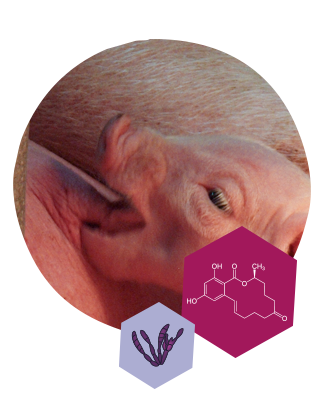

What types of Mycotoxins mainly affect porcine animals?
The intoxications produced by Mycotoxins can be acute, subacute or chronic, since their effects depend on the dose received and the time of exposure and, logically, on the toxin involved.
- Aflatoxins: (AFB1, AFB2, AFG1, AFG2)
- Ochratoxin A : Ochratoxin A : (OTA) and Citrinin
- Trichothecenes: Group A: Toxin T-2
Group B: Doxynivalenol (DON or also vomitoxin) - Zearalenone- Fumonisins: (FB1, FB2)
Reference levels of main Mycotoxins affecting porcine animals
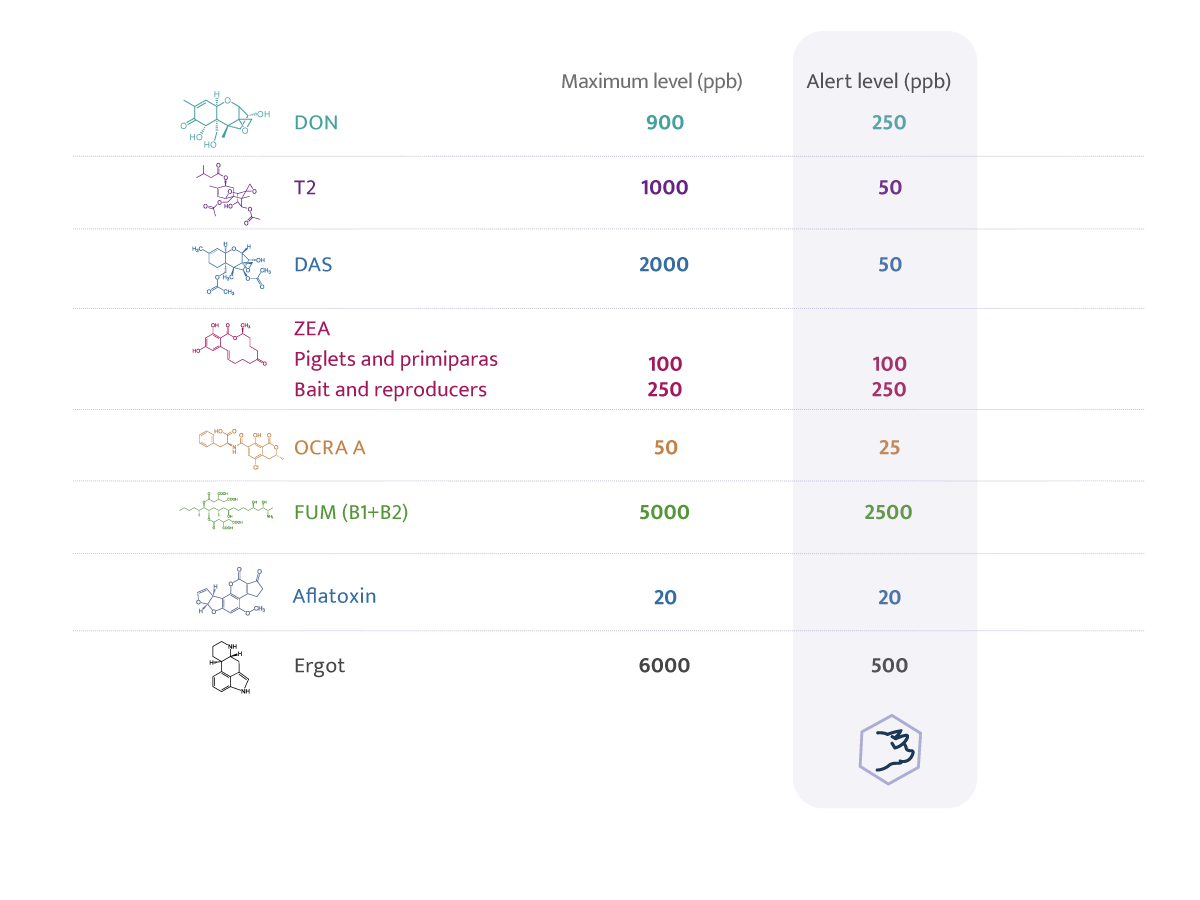

At what stage of porcine production Mycotoxins generate most problems?
In porcine production acute clinical effects of Mycotoxins are observed on:
- Digestive and immune system (weight loss, predisposition to diseases of infectious origin, etc.)
- Reproduction (abortions and infertility, weak piglets, etc.)
Though the influence of chronic subclinical effects on porcine animals should also not be ignored (increased conversion rates, susceptibility to infectious diseases, decreased longevity in sows and boars, etc.) as it poses continuous loss of production efficiency, genetic potential and farm profitability.


Which organs Mycotoxins affect and what are the pathologies produced?
Toxic effects of Mycotoxins are determined by the dose of ingestion, duration of exposure, interaction with other toxic substances and genetic susceptibility of the animal. Affected metabolic organs are - liver, kidneys and lungs - but Mycotoxins can also affect the nervous system, immune system and reproductive system.
Aflatoxins
(AFB1, AFB2, AFG1 AFG2)
- Hepatic injury
- Increased mortality
- Abortions
- Poor feed efficiency
- Decrease in food intake
- Carcinogenic effects
Ochratoxin A (OTA)
- Severe renal failure
- Polyuria (increased urination)
- Polydipsia (increased water intake)
- Poor growth
- Alteration in feed
- Poor conversion rate
- Diarrhoea
Trichothecenes Group A (TOXIN T2)
- Hemorrhages and enteritis
- Reduced feed intake
- Vomiting
- Total rejection of feed
- Immunosuppression
Trichothecenes Group B
- Decreased feed intake and growth.
Zearalenone
- Vulvovaginitis
- Elongation of uterus
- Sterility
- Testicular atrophy in boars
- Abortions
- Diarrhoea
- Body weight loss
- Splay leg in piglets
Fumonisins (FB1, FB2)
- Histological lesions of severe interlobular pulmonary edema
- Liver apoptosis and biliary retention
- Increased serum levels of AST, GGT and bilirubin

In which raw materials do we find main Mycotoxins affecting Swine?
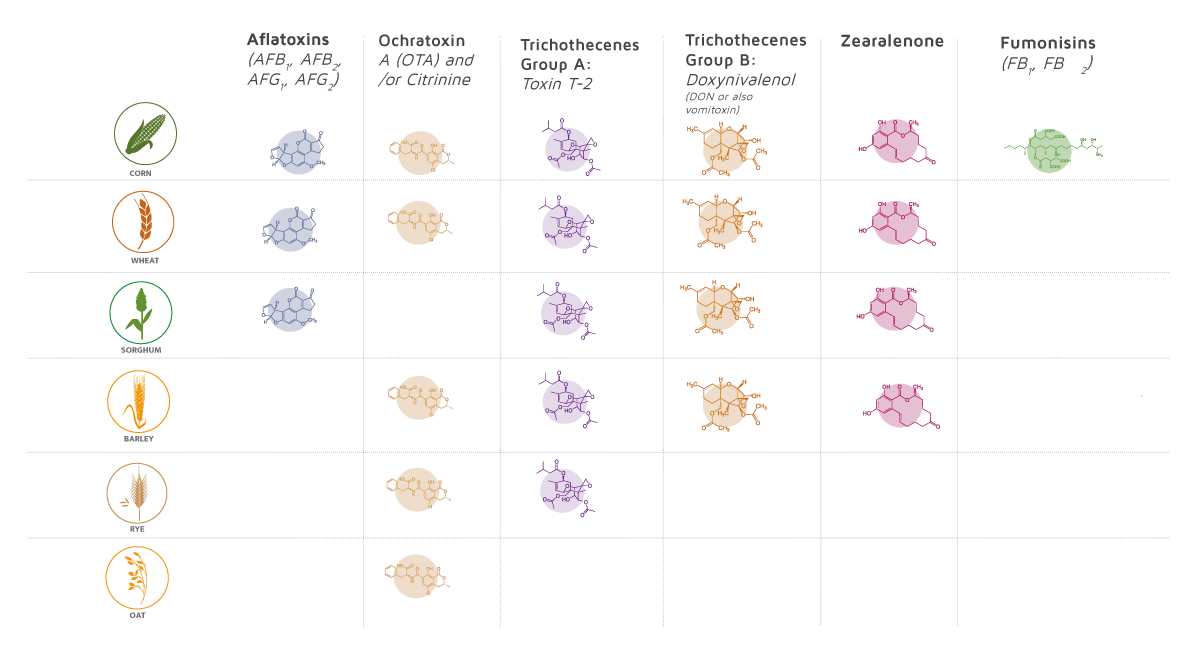

What detection methods are used to detect Mycotoxins in porcine?
Mycotoxins in feed are commonly detected and quantified using antibody-based assays and chromatography techniques.
ELISA test
The enzyme-linked immunosorbent assay (ELISA) is an antibody-based assay that is commonly used for Mycotoxins detection.
There are several commercial ELISA kits available for aflatoxins, deoxynivalenol, fumonisins, ochratoxins and zearalenone.
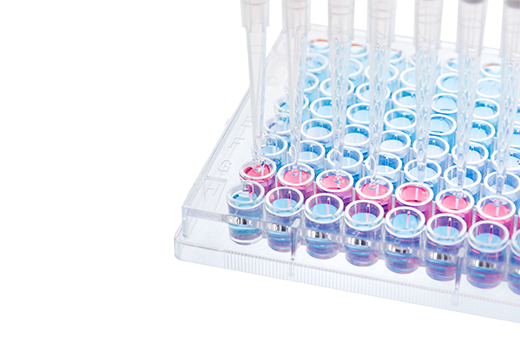
Chromatography and Spectrometry ( HPLC , GG/MS and LC-MS/MS)
High performance liquid chromatography (HPLC) and gas chromatography/mass spectrometry (GC/MS) are two of the most commonly used methods for the detection and quantification of Mycotoxins.
HPLC and GC/MS, apart from having detection limit of < 0.05 ppm for many Mycotoxins, also require expensive equipment and technical support.
LC-MS/MS is a technique that can analyse all Mycotoxins, with increased sensitivity, precision and reproducibility.
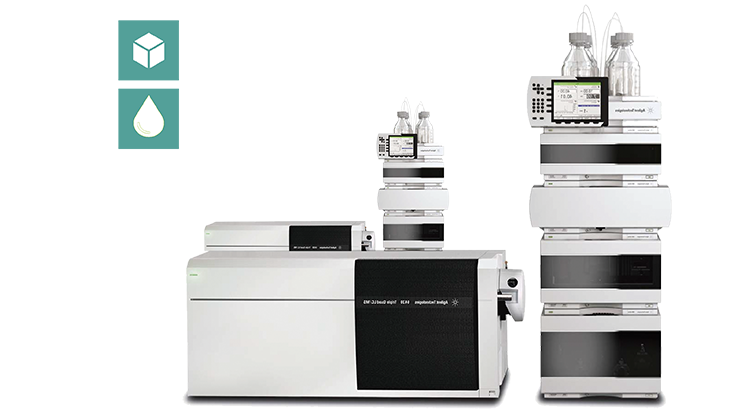

How do we prevent from and/or fight against Mycotoxins in Swine?
Handling mycotoxin contamination and health consequences in animal production pose increasing challenges for food security and safety systems of the consumer.
In addition to controlling temperature and humidity using aeration, it is advisable to use fungal inhibitors and to use protection against damage caused by insects and rodents.
Despite all the efforts made in order to reduce the level of Mycotoxins in feed ingredients, there is always a certain degree of contamination that may pose a risk to livestock animals.

Mycotoxins are always present, at least in small amounts, and the effects of the presence of those small amounts of diverse Mycotoxins results in synergitics effects that can be greater than the sum of the individual effects that we have described for each type of mycotoxin.
Prevention against Mycotoxins, is necessary and the use of detoxifying or adsorbing agents in Swine rations is essential.
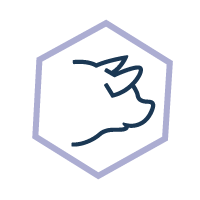



 Micotoxicosis prevention
Micotoxicosis prevention